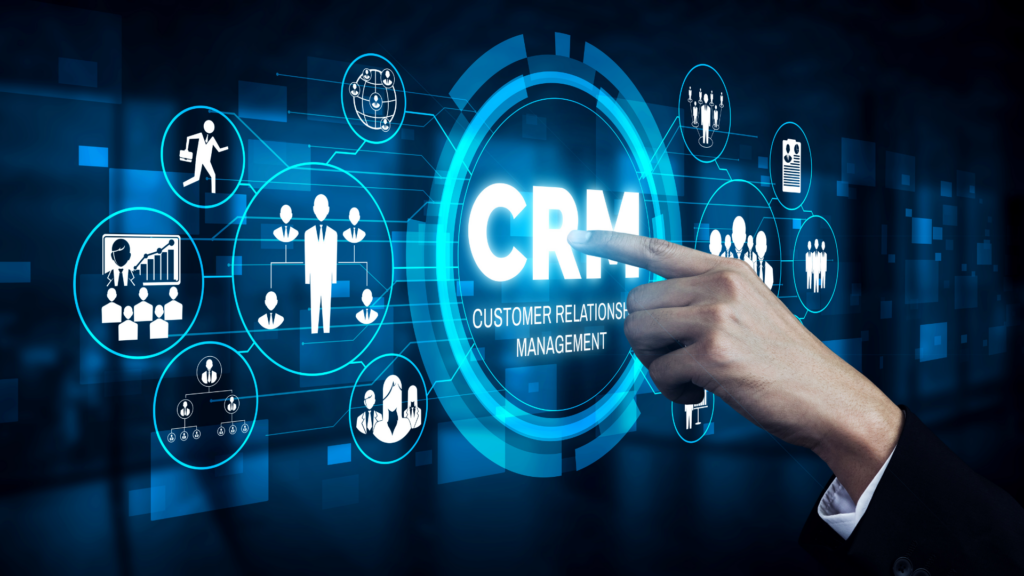What Do I Really Do with A CRM?

It’s time to rethink the CRM. It’s not just for evaluating prospecting and reviewing the pipeline, though it’s 2023-necessary for doing those.
The CRM is really about your market, real intelligence, and finding opportunities to grow the business. And that makes it incredibly important to you – and potentially to whoever runs or buys your company someday.
Here’s a conversation I had the other day with a former sales training client. (He’s a broker but the point is relevant across industries, so don’t get hung up on yours.)
Him: “We’ve got our team calling on people all the time. Some may be buyers and some are sellers. We want to know what they’re doing, what they’re looking for, where they fit, so we’re ready at the right time.”
Me: “And they’re putting this all in the CRM, right?”
Him: “It’s spotty. Some use it, some don’t.”
Me: 
And that’s the problem. Too many people only see value in entering information into Salesforce of Hubspot or whatever they have IF there’s a near-term opportunity.

Nope.
The Asset
Think about a broker. They’re a market maker. They need information readily available on who is selling what, who is buying what, and WHEN. If they have this information, they can put the right offer in front of the right person at the right time. And, well, sell more.
Guess where that information comes from? The person who talked to said, buyer or seller. And never entered it into the CRM.
How much more can your company (or you) produce if the information grows from you, you + 2-3, to a team, all armed with this information? There’s not a team meeting organized enough to get all of the opportunities and information from one person’s head into everyone else’s. It has to be captured. In something that’s easily searchable.
Most people won’t do this. Because it’s work. It’s a lot of little work all the time. And people stop going to the gym on January 7 because “I don’t have time.”
What could the CRM capture that would increase the value of the business?
The work is tracking…..
- What people are looking for
- When they’re looking for it
- When their last transaction was
- How their business is growing
- Headcount now
- Hiring plans in the future
- Changes in funding
- New changes at the top spots
- Their preferences and price points
- What people have bought in the past
- How do they like to work or transact
- Birthdays, anniversaries, kids’ names, etc….
- Introductions you’ve made for them
- Introductions they’ve made for you
You would know what deals to put together. And when. Before anyone else.
You’d know about their policies, square footage, licenses, interest rates – whatever it is you’re involved in. And if you’re paying attention, when to suggest they upgrade, change, add, delete, etc….. (I had to go to my home insurance provider and suggest we increase coverage.)
Do you know the alternative? Hearing someone else got the business because you didn’t reach out.
How valuable is THAT to a financial or strategic buyer someday?
It’s more important to you TODAY, and definitely next year, and more so the year after that, but don’t lose sight of the value it creates for a buyer.
But wait! There’s more…..
You MIGHT see product or service opportunities by aggregating the information or seeing patterns across contacts: “Hey, 15% of our contacts are talking about Y. We might be able to do that.”
You may see a need to pivot your business or your messaging. I don’t know. But the truth is, you probably don’t either because no one is really using the tool like they should.
But consider the implications if you had a growing source of information on your market, customers, and contacts. It could – gasp – help guide the business as you think about threats, opportunities, shifts in the market, and more.

Keeping Score
Let’s talk contact scoring, rationalization, or any other buzzword.
You’d know who provided the most introductions.
You’d know to whom you’ve sent introductions or referrals, and if they reciprocated.
That introduction thing. It’s one way to score contacts. As a database grows, you can’t keep in touch with everyone. So you have to start finding the 20% who deliver 80% of the value.
You could start tracking who does the most business, or who sends you the most business (a lot of referral-based businesses). You then score them. Something like:
- Jacks = any contact
- Queens = those with “potential”
- Kings = those who have sent us a lead
- Aces = those who have sent us multiple leads
That’s just one pass at it. You could do it based on transaction volume
Another way to think of it is product or service lines. If you have this, you could score based on current revenue, potential revenue, and the quality/depth of the relationship as a way to assess risk.
However you think about it, you’d know whom to focus on, when …over time.

And one last thought….
Tools and Relationships
For those of you in referral or relationship businesses – you’d know how to build relationships by remembering what people have told you. Birthdays. Kids’ names. Anniversaries. Their interests. That is if you follow this sort of plan.
Everyone is digital. Want to stand out? Send a handwritten card in the mail. Or a small, thoughtful gift.
Strange how people respond when you pay attention to what they’ve told you. People don’t really pay attention to others.
And guess what relationships do? They lead to business in the future.
Most CRMs can be rigged up with a third-party tool to automate relationship management (I know those three words make an oxymoron).
Most potential relationships die before they get going. Two people have an introductory call or coffee and send one email after that, and then it’s “out-of-sight-out-of-mind,” and the time invested was really wasted. There are better ways to spend $45 dollars and the hour at lunch.
Here’s a different way to approach it, using your CRM, especially for those of you working in local markets, building referral or channel relationships, or playing a long game with buyers, whether B2B or B2C.
- Post the first conversation, enter the contact’s information in the (drumroll, please…..) CRM.
- Tag them based on whatever sorting is meaningful: title, industry, geography, potential product, etc…..
- Take that contact, and move them into a campaign or sequence using a tool like Outreach or Salesloft that has a pre-built and pre-scheduled set of actions you take over time: emails, calls, emails to schedule calls, emails to schedule meetings, Linkedin messages, handwritten notes (my favorite), sending cookies, whatever. (This eliminates the task of creating a … task. Any reduction in friction creates a greater likelihood of taking the needed action later.)
That last piece is important because it builds equity (is that a thing?) in the relationship. It’s not the first touch with a prospective buyer, referral source, or channel partner that gets a deal – it’s the 6th or 7th. And this is a way to get that started with ease.
Putting them in your newsletter doesn’t count. Most of the time. Sending a thoughtful note does.
It’s a brick-by-brick thing.


Yes, a CRM is great for pipeline
But it’s also great for building a central repository of all the knowledge on customers, contacts, referral sources, past deals, buyer behavior, and more.
It’s a great tool to focus efforts on growing sales.
And it’s the launch pad for managing relationships going forward.
Your competition isn’t (yet) doing this. They should be. Consider this your chance to get a jump on growth.

